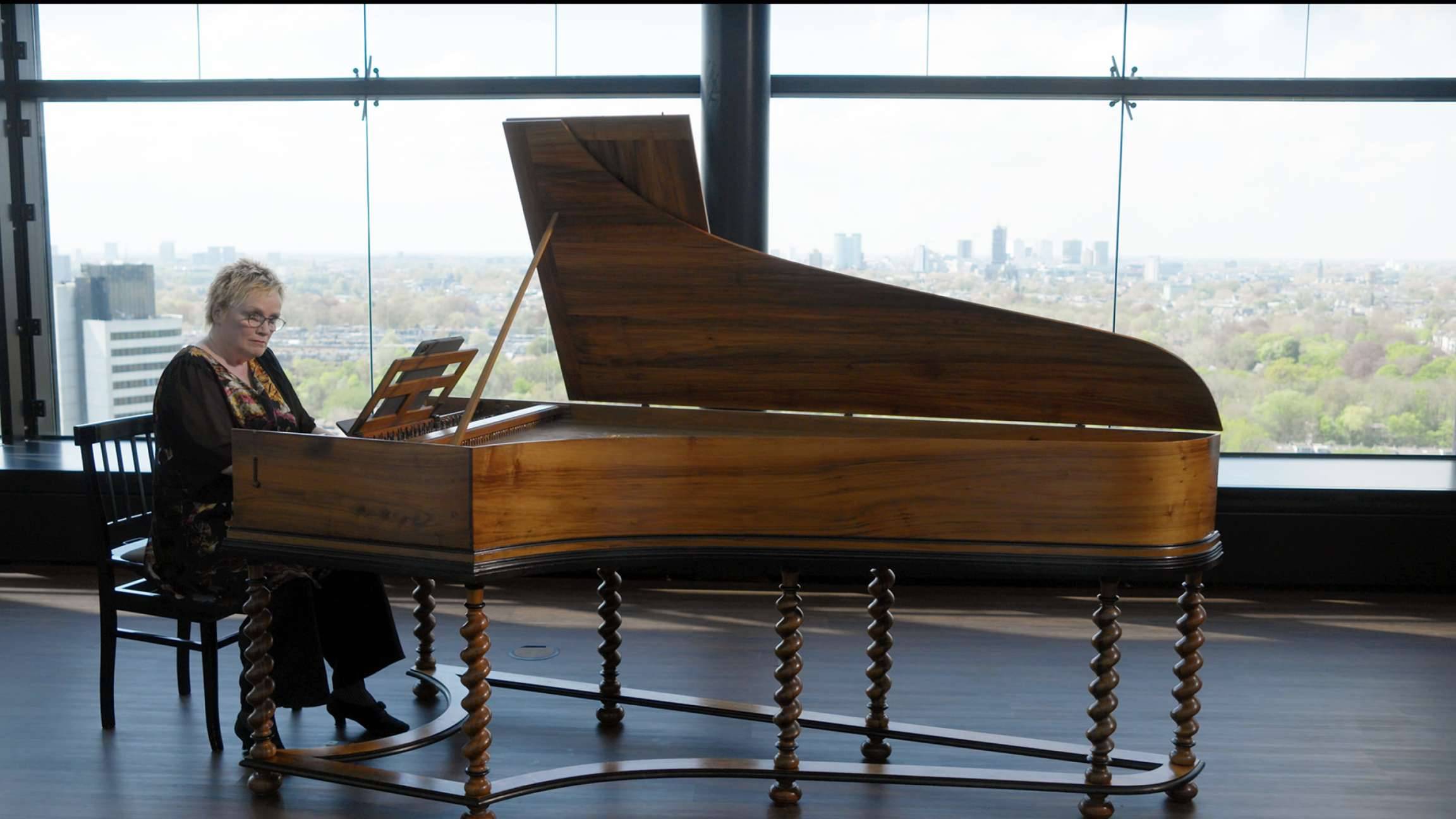

The Well-Tempered Clavier II no. 17 in A-flat major
BWV 870 performed by Christine Schornsheim
at the Provincial House of Utrecht
Behind the music
Panoramic views
Brand new notes form the prelude to an early fugue
However much music has survived, and however rich Bach’s biography is compared to his contemporaries, we know only too well that we are familiar with only a glimpse of Bach’s oeuvre. Take, for example, the ‘known unknowns’, like the music of a St Mark Passion or the first St Matthew Passion, as well as countless less well documented works (or versions of them). Or take the clever reuse of material, as was probably the case for the Wohltemperirte Clavier, which could be seen as a representative study collection. Sometimes, however, we can trace the provenance fairly precisely, as in the case of this seventeenth prelude and fugue from the WTC II.
In this challenging diptych, pieces from very different periods come together. Bach wrote his prelude around 1741 especially for the Clavier (the manuscript is full of corrections). Like the prelude in F-sharp from BWV 882, it is a good example of Bach’s late style, in which the modern ‘sonata form’ determines how it unfolds. Typically, this means (very broadly speaking) that after the introduction the theme is treated with increasing firmness until finally it returns – almost cathartically – as a capitulation. Though this may sound abstract, the structure is easily felt. Each time the swaying first bars return in a new key, the ensuing variation becomes more complex. Three bars before the ending, the harmonic tension reaches a climax on a chord (called a ‘Naples’ chord), where the music seems to hold its breath for a moment.
The fugue began life around 1720 as the fughetta BWV 901, and almost 25 years later it was given a real upgrade. The largely three-part original (with a few small adjustments) forms the first half of the new four-part fugue. Following on, in the additional part composed for the Clavier, Bach demonstrates just how much freedom he has acquired over the years. Like an anchor among a whole range of complex manipulations, the descending chromatic line of the first countertheme is clearly heard. Here, too, Bach uses a Naples chord just before the ending, even more dramatically than in the prelude, before a fifth part joins the musical web for a few bars.
WTC II
We recorded Bach’s first book of Preludes and Fugues in all the keys at the homes of 24 different musicians. For this second part, performed in its entirety by Christine Schornsheim, we chose 12 very different locations in Utrecht, to celebrate the 900th anniversary of our home city.
Das Wohltemperirte Clavier, BWV 846-893
Composing 48 keyboard pieces in all 24 keys was the sort of challenge Bach enjoyed. In each of the two parts of the Wohltemperirte Clavier, he brought together the musical couple prelude and fugue 24 times; twelve in minor keys and twelve in major. In the preludes, he gave free rein to his imagination, and demonstrated mathematical tours de force in the fugues. In contrast to the iron discipline Bach had to apply to his church compositions, here he could abandon himself to intellectual Spielerei without worrying about deadlines.
The first part of the Wohltemperirte Clavier dates from 1722, although it contains some music that was written in the preceding five years. There is less clarity about the history of part two. Bach compiled this second manuscript only around 1740, although once again some of the preludes and fugues it contains date from a much earlier period. Bach described the target group for this collection of pieces as follows: ‘Zum Nutzen und Gebrauch der Lehr-begierigen Musicalischen Jugend, als auch dere in diesem studio schon habil seyenden besonderem ZeitVertreib’ (For both the education of the industrious musical youngster and the enjoyment of those well-versed in this material’).
- BWV
- 886
- Title
- Prelude and fugue in A-flat major
- Epithet
- no. 17 from the Well-Tempered Clavier II
- Instrument
- harpsichord
- Genre
- harpsichord works
- Serie
- Das Wohltemperirte Clavier II
- Year
- 1741
- City
- Leipzig
Extra videos
Vocal texts
Original
Translation
Credits
-
- Release date
- 18 April 2023
-
- Recording date
- 22 April 2022
-
- Location
- Provincial House of Utrecht
-
- Harpsichordist
- Christine Schornsheim
-
- Harpsichord
- Bruce Kennedy, 1989 after Michael Mietke
-
- Director, camera and lights
- Gijs Besseling
-
- Music recording
- Guido Tichelman, Pim van der Lee
-
- Music edit and mix
- Guido Tichelman
-
- Camera, lights
- Danny Noordanus
-
- Data handling
- Stefan Ebels
-
- Assistant music recording
- Marloes Biermans
-
- Producer
- Josine Olgers
Discover
Help us to complete All of Bach
There are still many recordings to be made before the whole of Bach’s oeuvre is online. And we can’t complete the task without the financial support of our patrons. Please help us to complete the musical heritage of Bach, by supporting us with a donation!

